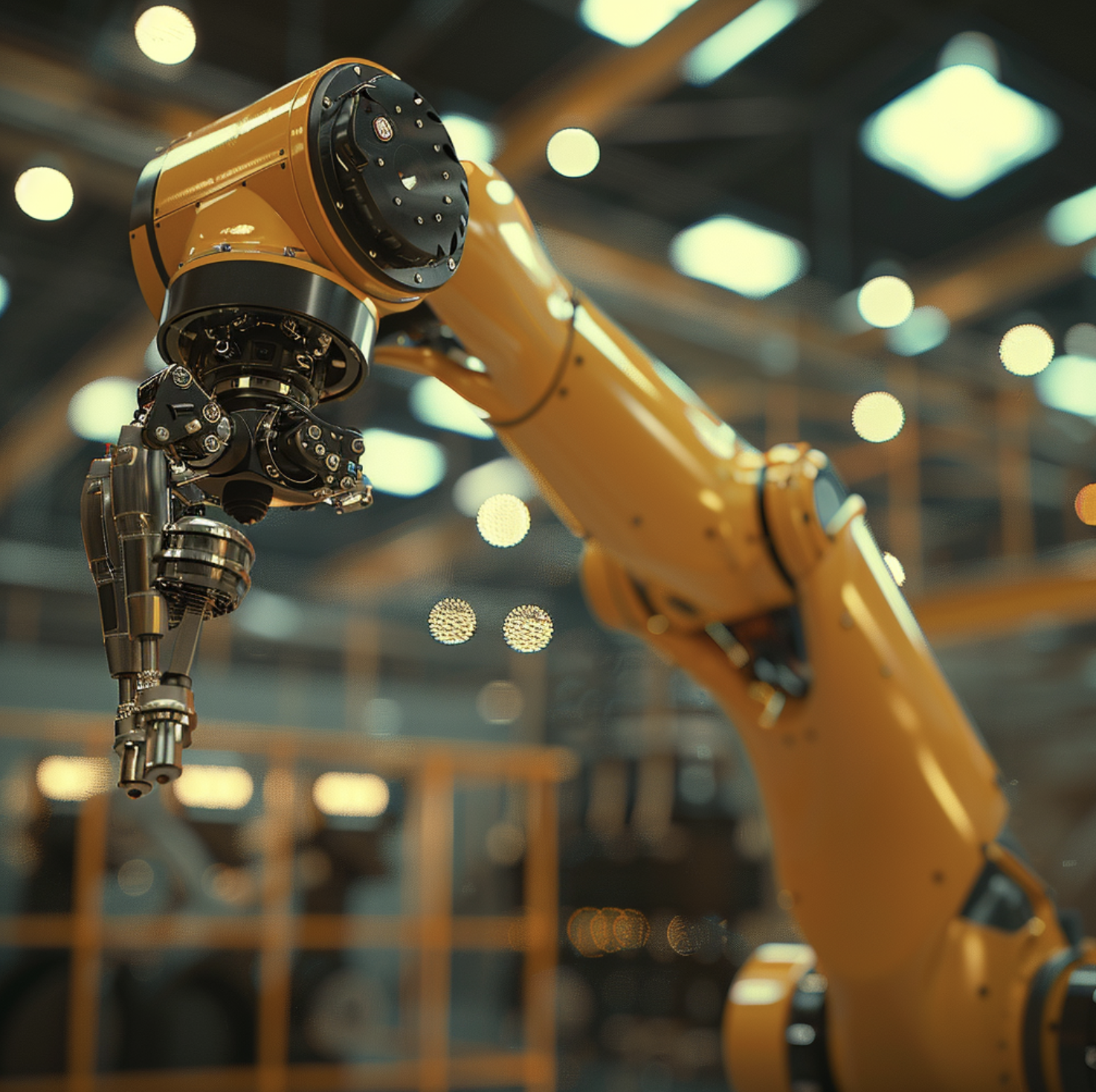

Robotic gripper mechanisms are the end-effectors on a robotic arm that physically manipulate objects.
They’re designed to grab, carry, and release materials during automated tasks.
A robotic arm consists of multiple joints that provide movement and flexibility. The joints connect the rigid links of the arm and allow it to bend, rotate and extend to different positions.
The three main types of joints found in a standard robotic arm are:
The combination of different joints with various ranges of motion allows the robotic arm to achieve a high degree of dexterity and manipulate objects precisely. Multiple joints working together allow the arm to reach around obstacles and into confined spaces.
Robot arms come in a variety of configurations to suit different needs.
The 7 most common types are:
Find out more in our in-depth article here.

The servo motors in robotic arms are responsible for controlling the angular position of the joints. These motors receive signals from the robot’s control system that determine the position the joint needs to move to.
Some key features of servo motors in robotics include:
Read more in our article here.
Robotic arms have a variety of useful applications across industries.
Let’s check them out:
Robotic arms are commonly used for assembling components or finished products. They can handle small, intricate parts and manipulate them with high accuracy.
Robotic assembly allows for faster, more consistent production of goods ranging from electronics to vehicles.
Robotic arms equipped with grippers or suction cups can grasp and move materials around a factory or warehouse. They’re employed for sorting, palletizing, packaging, and transporting all types of objects.
Using robotics for material handling reduces physical strain on human workers and minimizes product damage.
Some robotic arms have built-in cameras and sensors to detect defects or take measurements.
They’re useful for quality control applications like surface inspection, dimension verification, and x-ray testing.
Automated inspection improves accuracy and helps identify imperfections that human inspectors might miss.
Any job that might be dangerous for humans to perform is an ideal application for robotic arms. They can handle toxic chemicals, work in extreme heat or cold, lift heavy payloads, and conduct repetitive tasks without fatigue.
Robotic arms save lives by taking over dangerous jobs in factories, labs, and other hazardous work environments.
Understanding how robotic arms operate takes some work, but you're now equipped with knowledge about the key components like joints, motors, and grippers that power these state-of-the-art automation tools.
Whether you're an engineer looking to design a new robot arm or a business owner looking to bring automation to your factory, now you can dive even deeper!
Boost your production line with Standard Bots' RO1, a cutting-edge robotic arm mechanism designed to elevate both burgeoning startups and established industry giants.
Explore how RO1 combines AI's adaptability with the robustness of a robotic arm mechanism through a complimentary 30-day trial.